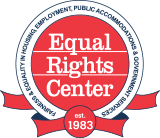The Community Reinvestment Act: Past, Present, and an Uncertain Future
By Nick Adjami
April 1, 2020
The Community Reinvestment Act (CRA) was passed in 1977 to address discrimination in the lending market. Before the Act’s passage, banks were known to restrict their financial services to predominantly white neighborhoods. This practice, known as redlining, began in the 1930s, and unjustly cut off minority neighborhoods from access to credit, making it all but impossible for residents of those neighborhoods to buy a home and accumulate wealth. Decades of such discrimination contributed to the racial wealth gap that persists today.
The CRA mandated that, wherever banks operate, they must meet the credit needs of the “entire community, including low- and moderate-income neighborhoods.” This directive, along with the Fair Housing Act (1968) and Equal Credit Opportunity Act (1974), outlawed redlining, and opened credit opportunities for those in previously redlined neighborhoods. Now, the Office of the Comptroller of the Currency (OCC) and the Federal Deposit Insurance Corporation (FDIC) have proposed a rule that could undo this progress and once again cut off low-income, minority neighborhoods from crucial financial services.
Currently, in order to fulfill their obligations to the CRA, banks are instructed to serve low- and moderate-income (LMI) communities by engaging in “eligible activities,” such as investing in small businesses or facilitating the development of affordable housing. The new rule drastically expands the scope of eligible activities to include such projects as funding “improvements to an athletic stadium.” Further, the proposed rule reneges on current guidelines that require that eligible activities primarily benefit LMI people. The proposed rule states only that the activities may occur in LMI neighborhoods, with no regard to the actual impact of these activities on the neighborhood’s residents. Similarly, affordable housing projects would be held to weaker standards. The development of housing that LMI families could afford to live in would qualify for CRA credit, regardless of whether any LMI families actually occupy the units.
Second, the proposed rule alters the framework for evaluating banks’ fulfillment of their obligations to the CRA. Essentially, the more money a bank spends on “eligible activities,” the better their CRA rating. This overly simple metric would likely encourage banks to pursue the largest and easiest deals, as opposed to the most impactful. Theoretically, a bank could earn an outstanding rating simply by refurbishing a bunch of football stadiums. Moreover, in prioritizing the sheer amount of money spent, the proposed system ignores the actual needs of LMI communities, as banks might neglect the critical small-dollar financing needs of LMI homeowners and small businesses in favor of those larger deals. This proposed evaluation system fails to recognize the complex and diverse needs of American neighborhoods and has the potential to dramatically decrease the CRA’s beneficial impact.
Third, the proposed rule indicates that to receive an outstanding rating, banks would only need to meet their CRA investment benchmarks in “more than 50 percent” of their target neighborhoods. That is to say, banks could ignore nearly half of the areas they are supposed to serve without consequence. It is not hard to see how such relaxed regulations could lead to an environment similar to that which existed before the passage of the CRA in 1977, where low-income, minority neighborhoods were denied access to necessary financial services.
The unfortunate truth is that despite the CRA, redlining and lending discrimination persist today. The solution is not to back off from the CRA’s promises as the OCC and FDIC have proposed, but to re-commit to generous, thoughtful investment in LMI communities, and to vigorously enforce anti-discrimination law.
Thankfully, the proposed rule has not been implemented yet, and the agencies that proposed it are accepting feedback through April 8, 2020. You can make your voice heard by submitting a public comment to the Federal Register. Here are some tips:
- Introduce yourself, make clear which rule you are commenting on, and explain the rule’s relevance to you.
- Explain the significance of the current regulations and the potential consequences of the proposed rule.
- Conclude with a summary of your points. For more, see How To Effectively Comment On Regulations from the Brookings Institution.
———
Further Reading:
National Community Reinvestment Coalition:
- Summary Fact Sheet On The OCC And FDIC CRA Proposed Rule
- Initial Analysis Of The FDIC And OCC Notice Of Proposed Rulemaking Concerning The Community Reinvestment Act
Shelterforce:
- Protecting the Community Reinvestment Act Is an Investment in Economic Justice
- Redlining Would Be Relegalized by CRA Reform Proposal
———
If you believe you may have experienced discrimination in housing, you can contact the Equal Rights Center. To report your experience, please call 202-234-3062 or email info@equalrightscenter.org.

